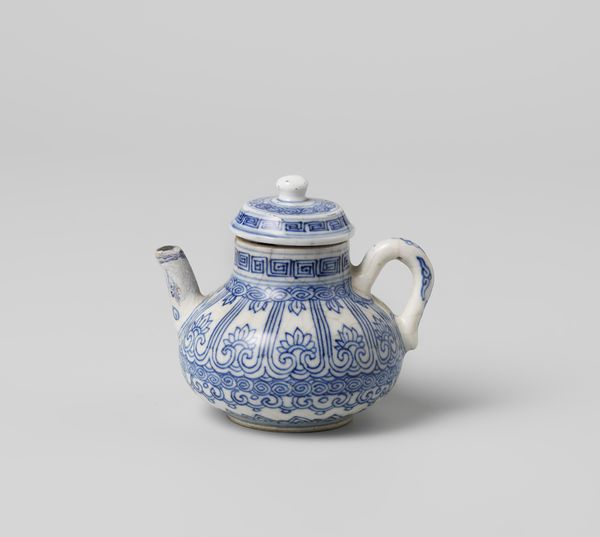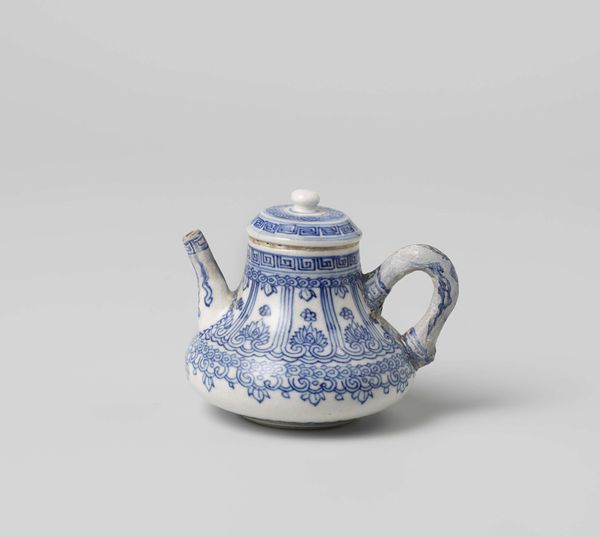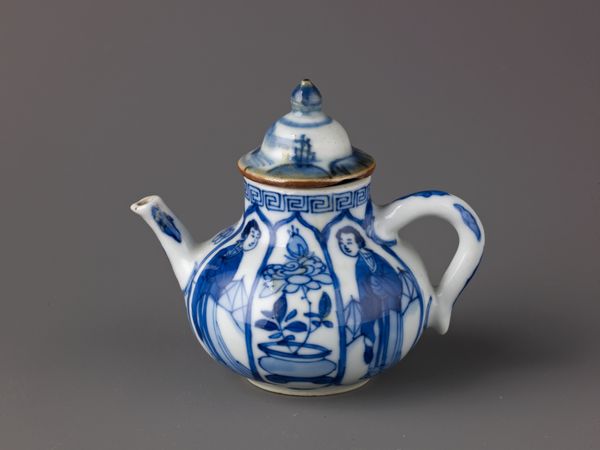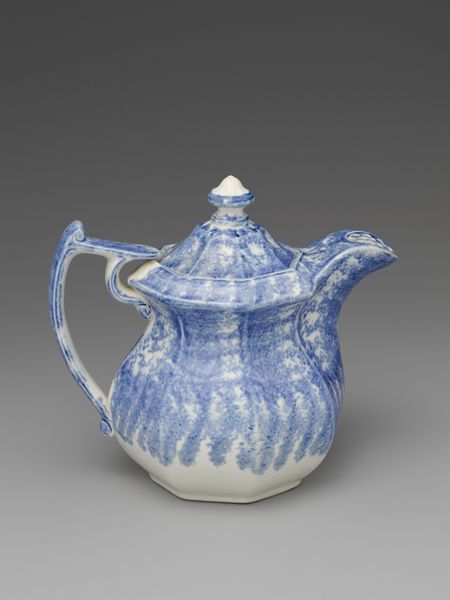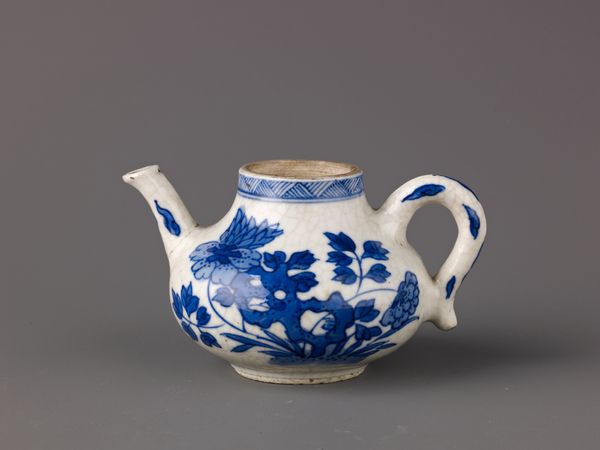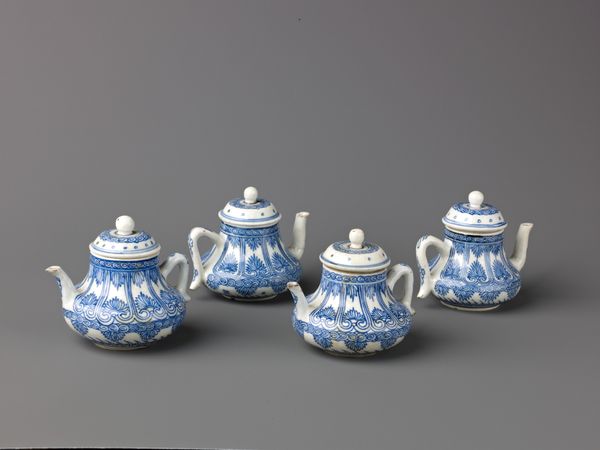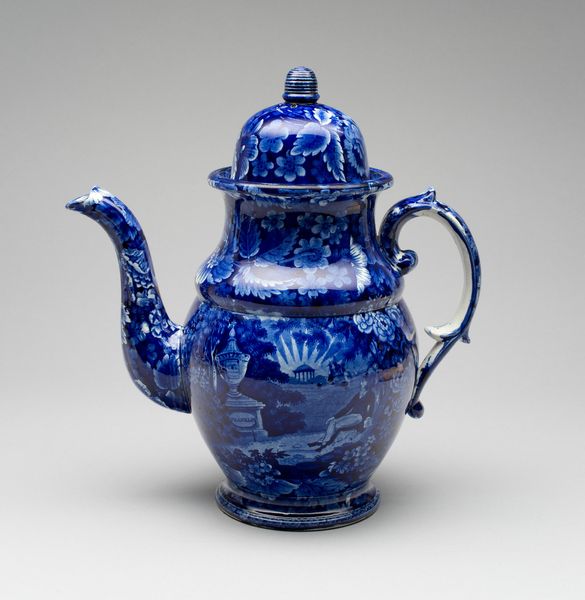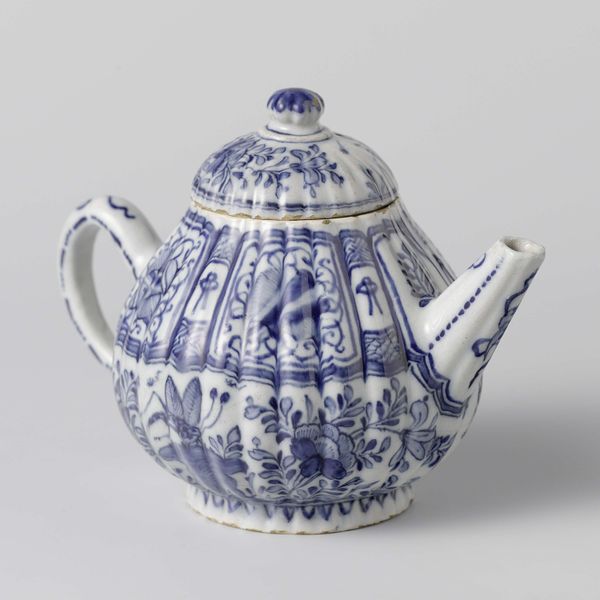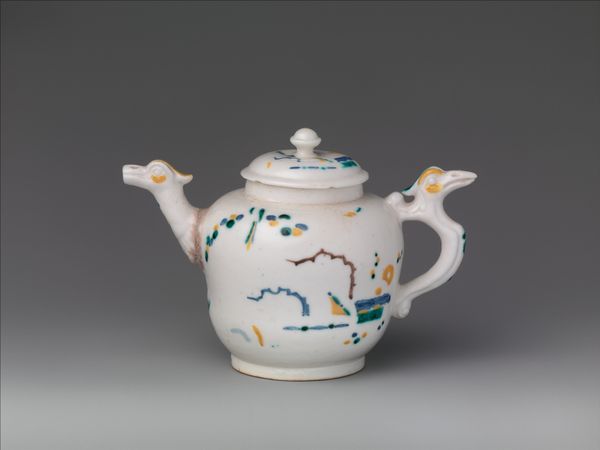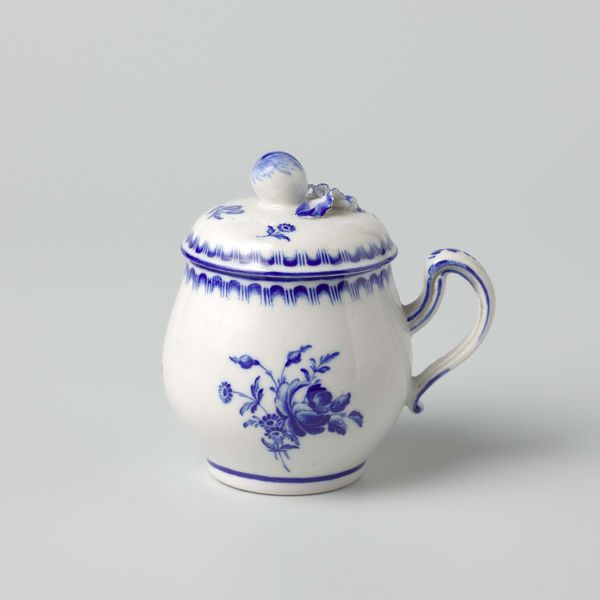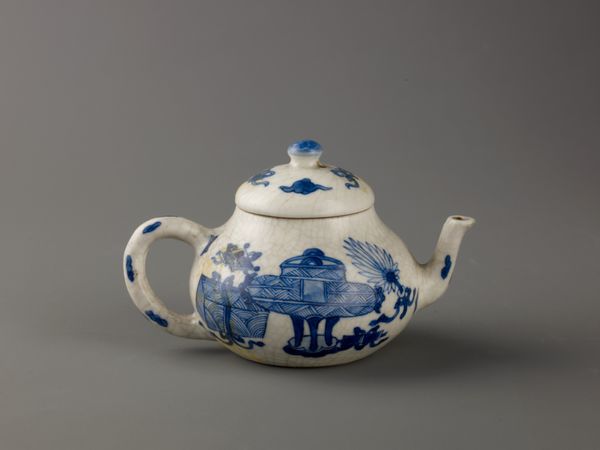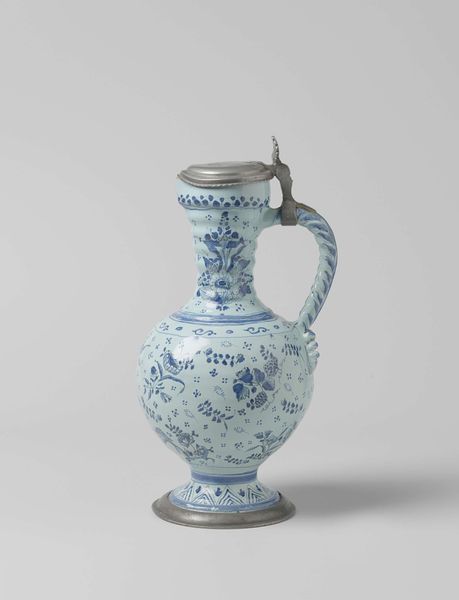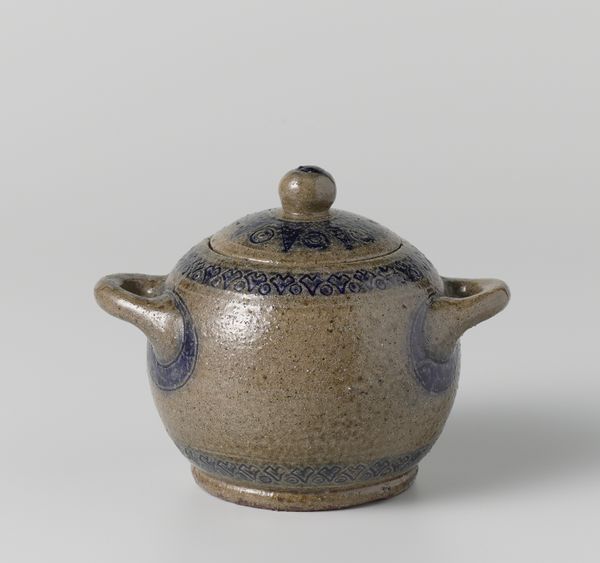
ceramic
#
asian-art
#
ceramic
#
decorative-art
Dimensions: H. with lid: 7 cm.
Copyright: Public Domain
Curator: Welcome. Let’s take a look at this captivating "Small covered wine pot or teapot". It’s a piece of Chinese ceramic art from the Kangxi period, dating approximately 1662 to 1722. Editor: My first impression is one of serenity. The cool blues and elegant shape are immediately calming. The delicate swirling patterns feel both traditional and somewhat…playful. Curator: Yes, blue and white porcelain has a profound history in Chinese art, charged with layers of symbolic weight. Blue is linked to the Daoist concept of yin, to water and fluidity. It evokes both tranquility and immense power. White often suggests purity and emptiness. Editor: Given the period, I find myself wondering about the social context. The Kangxi Emperor oversaw a period of relative stability and cultural flourishing. It must have had implications on what types of material objects became common among people during that time, right? Who used this teapot? Was it an object for personal use or trade? Curator: Certainly, those would all be elements influencing the imagery! Look at the details: the stylized lotus petals which symbolize purity and spiritual awakening, for instance. Editor: Exactly, the lotus imagery suggests this piece wasn’t solely about function; there's a symbolic layering here, perhaps hinting at aspirations for enlightenment or moral virtue, as well. Curator: Also consider the form, the elegant curve of the handle and spout, the rounded body... Ceramics played an essential role in ritual and daily life during the Kangxi reign. Teapots, such as these, could also function for heated rice wine, thus bringing symbolic considerations into everyday use. Editor: These details—the choice of blue, the lotus motifs, even the fact that it’s a humble object elevates everyday life to a form of political commentary. Was the "good life" for everyone? Perhaps something as innocuous as tea carried greater symbolic weight. Curator: It really encourages reflection. We observe how artisans imbue objects of utility with potent emblems, drawing upon beliefs and expectations of an audience long gone, so, ultimately, an image remains and acquires an evolving life over time. Editor: It’s such a powerful reminder that even the smallest object can carry the weight of a culture's beliefs, aspirations, and contradictions across centuries.
Comments
No comments
Be the first to comment and join the conversation on the ultimate creative platform.
